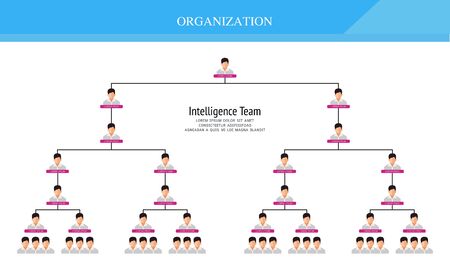Understanding Employers’ Liability Insurance in the UK
Employers’ liability insurance is a fundamental requirement for businesses operating within the United Kingdom, serving as a protective measure for both employers and employees. This type of insurance covers the cost of compensating employees who are injured or become ill as a direct result of their work. Regardless of whether you run a bustling family-owned café in Manchester or manage a growing tech start-up in London, employers’ liability insurance is not just an optional extra—it is a legal necessity if you employ one or more staff members. The importance of this insurance extends beyond mere legal compliance; it provides peace of mind that your business can meet its financial responsibilities if the unexpected occurs. Many new business owners mistakenly believe that small teams or casual employment arrangements do not require such coverage, but the law is clear: most businesses with employees must have at least £5 million of cover from an authorised insurer. Exemptions exist, such as for certain family businesses and public organisations, yet these are the exception rather than the rule. By ensuring you have suitable employers’ liability insurance in place, you safeguard your workforce and demonstrate a commitment to their wellbeing—an essential element of responsible business practice in today’s UK workplace.
2. The Legal Framework: Statutory Requirements for Employers
The foundation of employers’ liability insurance in the UK is the Employers’ Liability (Compulsory Insurance) Act 1969, a crucial piece of legislation designed to protect employees if they are injured or become ill as a result of their work. This Act makes it a legal requirement for most employers to have at least a minimum level of insurance in place. Understanding these legal obligations is essential for all business owners, whether you operate a family-run shop in Kent or a large corporation in Manchester.
Who Needs Employers’ Liability Insurance?
The law applies broadly, but there are some exceptions. In general, you must have employers’ liability insurance if you employ anyone who is not a close family member, unless you operate as a sole trader without any employees. Even part-time staff, temporary workers, apprentices, and volunteers may trigger the need for cover under certain circumstances. Below is a summary:
| Type of Worker | Insurance Required? |
|---|---|
| Full-time employees | Yes |
| Part-time employees | Yes |
| Temporary workers | Yes |
| Apprentices | Yes |
| Family members (unincorporated businesses only) | No* |
| Sole traders with no employees | No |
*Note:
If you run a limited company—even if your only employees are family members—you will still usually need insurance.
Minimum Cover Levels and Policy Display
The Act mandates that employers must hold insurance with a minimum cover of £5 million from an authorised insurer. Additionally, you are legally required to display your certificate of insurance prominently at your workplace, either physically or digitally so all employees can access it easily.
Penalties for Non-Compliance
Failing to comply with the Act can lead to serious consequences. The Health and Safety Executive (HSE) enforces the law and has the authority to impose substantial fines:
| Breach | Penalty |
|---|---|
| No valid insurance in place | Up to £2,500 per day |
| Failure to display certificate | Up to £1,000 fine |
A Practical Example from Everyday Business Life
Consider a small bakery in Yorkshire employing two part-time assistants and one apprentice. Even though the team is small and might feel like an extension of the family, the owner must still hold employers’ liability insurance to meet legal requirements and avoid hefty penalties. This example highlights how the law covers a wide range of real-world situations across British businesses.

3. Who Needs Employers’ Liability Insurance?
Employers’ liability insurance is a legal requirement for most organisations and businesses operating in the UK that employ staff, whether full-time, part-time, or even on a casual basis. Under the Employers’ Liability (Compulsory Insurance) Act 1969, nearly every business that has employees—regardless of size—must hold this insurance to protect against claims arising from workplace injuries or illnesses. This rule applies to a broad range of sectors and working arrangements, reflecting the diverse nature of the UK’s workforce.
Businesses and Organisations That Require Cover
Examples include limited companies employing staff, partnerships with one or more employees, charities with paid workers, contractors hiring temporary staff, and even family-run shops if they employ anyone outside their immediate family. For instance, a local bakery in Manchester with a couple of part-time assistants needs employers’ liability cover just as much as a tech start-up in London with a team of software developers.
Exceptions to the Rule
Certain exceptions exist. Sole traders who do not employ anyone else, public organisations such as government departments, and businesses where all employees are direct family members (such as spouses, parents, children, or siblings) may be exempt. However, these exemptions are strictly defined. For example, if a family-run café in Birmingham hires someone who is not related to them—even on a temporary basis—they must obtain employers’ liability insurance.
Common Scenarios in the UK Workplace
The requirements apply across various employment models prevalent in the UK. Whether you’re running a construction firm in Glasgow with subcontractors on site or a small marketing agency in Bristol offering internships, it’s essential to assess your obligations. Even home-based businesses that invite employees into their residence for work purposes are generally required to have this insurance. Ultimately, if there’s any doubt about whether your organisation needs employers’ liability insurance, it’s best to seek professional advice to ensure compliance and avoid substantial fines.
4. Choosing the Right Policy: Factors to Consider
Selecting the correct Employers’ Liability Insurance policy is crucial for every UK business owner. The right policy not only ensures legal compliance but also protects your company and employees in case of workplace accidents or illnesses. Here’s a practical guide to help you make an informed decision, with a focus on real-world needs and British legal standards.
Assessing Your Business Needs
Every business is unique, and your insurance should reflect your specific operations. Begin by considering the size of your workforce, the nature of your activities, and potential risks associated with your sector. For example, an office-based consultancy may face different risks compared to a construction firm. Think about:
- Number of employees: More staff usually means higher premiums.
- Type of work: Manual labour or hazardous environments increase risk.
- Previous claims history: A history of claims can affect your premium and insurer options.
Understanding Cover Limits
UK law requires employers to have at least £5 million in cover, but many insurers provide up to £10 million as standard. Assess whether this limit is sufficient based on the scale and risk profile of your business. If your company operates in high-risk sectors or employs a large number of people, consider opting for higher limits to ensure full protection.
| Business Type | Recommended Cover Limit |
|---|---|
| Sole trader with few staff | £5 million (minimum legal requirement) |
| Medium-sized office-based firm | £5–10 million |
| Construction/Manufacturing | £10 million or more |
Ensuring Legal Compliance
The policy must comply with the Employers’ Liability (Compulsory Insurance) Act 1969. Check that your chosen insurer is authorised by the Financial Conduct Authority (FCA) and that your certificate is displayed clearly at your premises—either physically or digitally accessible for all employees.
Key Points for Compliance:
- The insurer must be FCA-authorised.
- Your certificate must be accessible to staff and inspectors.
- You must maintain records for at least 40 years, as claims can arise long after employment ends.
Practical Steps for UK Businesses
- Compare providers: Use comparison websites and consult local brokers familiar with UK regulations.
- Read the small print: Ensure there are no exclusions that could leave you exposed (e.g., certain types of subcontractors).
- Regularly review cover: As your business grows or changes, update your policy accordingly.
A Family-Run Shop Example
If you run a family-owned bakery in Manchester employing part-time staff, start by reviewing how many people are on payroll during busy seasons. Choose a reputable UK insurer offering at least £5 million cover, display the certificate where everyone can see it in the kitchen, and set a calendar reminder to review your policy annually—especially if you plan to hire more hands before Christmas!
5. Compliance and Documentation: Keeping Your Business Protected
Ensuring your business remains compliant with employers’ liability insurance requirements is not just about having a policy in place; it’s about meticulous documentation and readiness for regulatory inspections. The Health and Safety Executive (HSE) takes compliance very seriously, so it’s essential for business owners across the UK to stay organised and proactive.
Maintaining Valid Certificates
Every employer must display a valid certificate of employers’ liability insurance where employees can easily read it, which often means posting it in a communal area or making it accessible digitally for remote staff. Remember, the law requires you to keep copies of these certificates for at least 40 years – a detail many overlook but one that could make all the difference during an inspection or claim.
Record-Keeping for HSE Inspections
Proper record-keeping is your best friend when it comes to demonstrating compliance. Keep detailed records of all insurance certificates, renewal documents, correspondence with your insurer, and any claims made under the policy. It’s wise to store both digital and hard copies, ensuring they are secure yet accessible should an HSE inspector request them.
Demonstrating Compliance in Practice
If the HSE visits your workplace, being able to swiftly produce up-to-date documentation will reflect well on your business and show that you take legal obligations seriously. Make routine checks part of your company culture: set calendar reminders for renewals, update displayed certificates promptly, and regularly audit your insurance records. Involving family members in small businesses—perhaps assigning a partner or adult child to help manage paperwork—can make compliance more manageable and instil shared responsibility.
Ultimately, by staying vigilant with your documentation and compliance routines, you protect both your employees and your business from costly penalties and legal complications. It’s a simple but vital aspect of responsible business ownership in the UK.
6. Common Pitfalls and How to Avoid Them
Employers’ liability insurance is a legal requirement in the UK, yet many employers—especially small business owners—find themselves tripping over common compliance mistakes. Understanding these pitfalls and learning how to sidestep them is crucial for protecting your business, your team, and your reputation.
Failing to Display Your Certificate Properly
One frequent oversight is not displaying your Employers’ Liability Insurance certificate where staff can easily see it. UK law mandates that this certificate must be accessible to employees, either as a hard copy on the premises or digitally via the company intranet. Failing to do so could result in fines of up to £1,000.
Not Updating Your Policy When Circumstances Change
Many employers forget to review their policy when there are changes in staff numbers, new business activities, or workplace relocations. This can leave you underinsured or even invalidate your cover. Always notify your insurer of any significant changes promptly to maintain proper protection.
Assuming Family Members Are Automatically Covered
It’s a common misconception that family members working in your business don’t need to be included in your policy. In most cases, if they receive a wage or have an employment contract—even informally—they must be covered just like any other employee.
Overlooking Temporary and Casual Workers
Some businesses mistakenly believe that temporary staff, freelancers, or seasonal workers aren’t considered employees under liability laws. However, anyone working under your direction and supervision typically falls within the scope of cover required by law. Regularly check that all such individuals are accounted for in your insurance.
Choosing Inadequate Levels of Cover
The minimum legal cover is £5 million, but certain sectors or larger teams may require higher limits. Cutting corners here may save money in the short term but can lead to costly legal claims if the worst happens. Consult with an insurance broker who understands your industry’s unique risks.
Practical Tips for Ongoing Compliance
- Schedule annual policy reviews alongside financial year-end tasks.
- Keep digital copies of certificates and share them via internal communications channels.
- Create a checklist for onboarding any new staff, including notifying your insurer.
- Work with a trusted local broker for advice tailored to UK legislation and your sector’s needs.
By being proactive and attentive to these details, UK employers can avoid unnecessary fines and ensure they remain compliant with all aspects of Employers’ Liability Insurance requirements.


